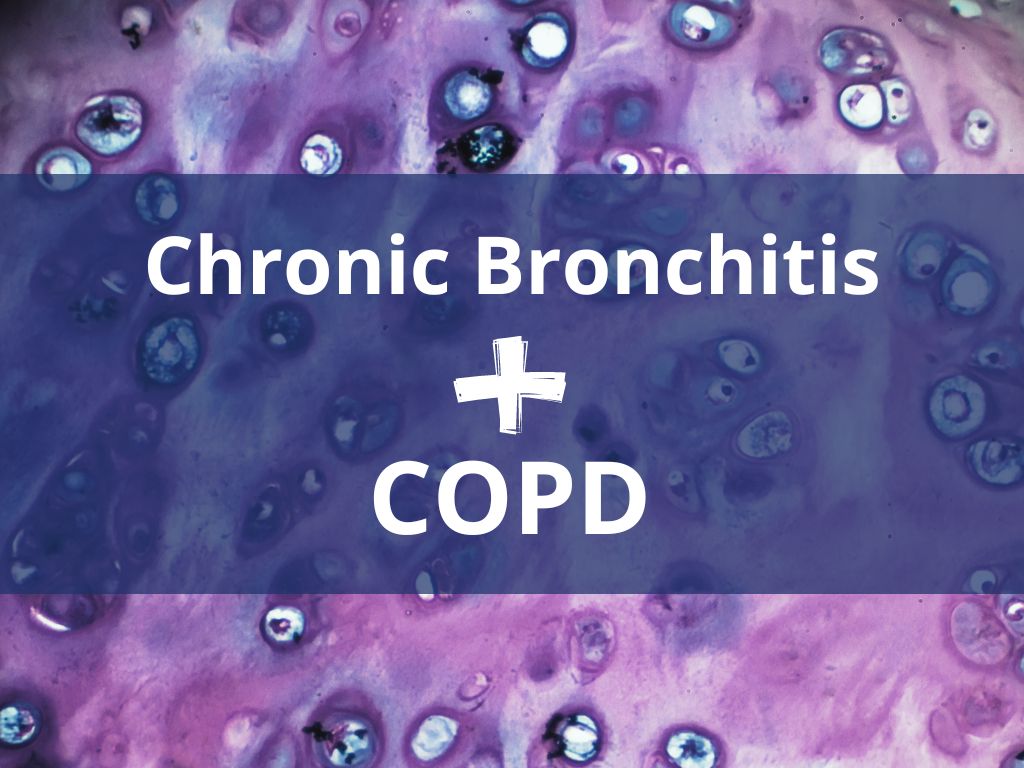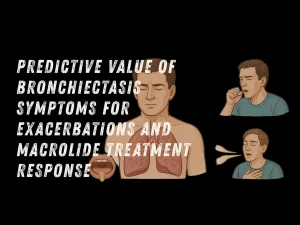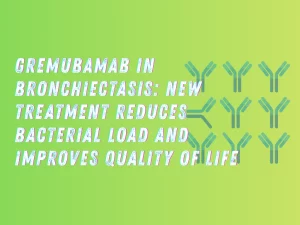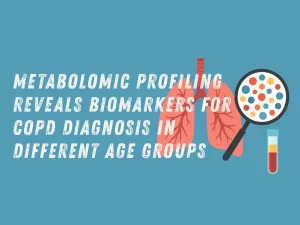Efficacy of Mepolizumab in Patients With COPD With or Without Chronic Bronchitis: Post Hoc Analysis of the METREX and METREO Phase 3 Trials

Rationale: Efficacy and Safety of Mepolizumab in Patients with COPD
The efficacy and safety of mepolizumab in patients with COPD has been investigated in two placebo-controlled Phase 3 trials, METREX and METREO, and theongoing MATINEE trial.
Chronic bronchitis (CB) in patients with chronic obstructive pulmonary disease(COPD) is associated with an increased exacerbation rate, worse quality of life, and mortality.
This post hoc analysis of METREX/METREO explores the effects of mepolizumab in patients with COPD with elevated eosinophil (EOS) levels, with andwithout symptoms of CB.
Method: In the METREX/METREO trials, patients with COPD and continued exacerbations despite maximal inhaled corticosteroid therapy were randomized to receive mepolizumab or placebo for 52 weeks
In METREX/METREO, patients aged ≥40 years with COPD and continued exacerbations despite maximal inhaled corticosteroid (ICS)-based triplemaintenance therapy for ≥12 months prior to the study were randomized to receive mepolizumab or placebo every 4 weeks for 52 weeks, in addition to ICS-containing triple therapy.
This post hocanalysis includes patients from METREX/METREO with EOS levels ≥300 cells/µL in the 12 months prior to the trial and/or ≥150 cells/µL at screening and assesses potential differential outcomes inthose with and without CB (determined by baseline St George’s Respiratory Questionnaire [SGRQ]responses).
Outcomes included the annualized rate of moderate/severe exacerbations, and exacerbations requiring emergency department (ED) visits and/or hospitalizations; changes frombaseline in COPD-specific SGRQ, and COPD assessment test (CAT) scores at Week 52; and thepercentage of SGRQ and CAT responders at Week 52.
Results: Mepolizumab reduced exacerbation rates and improved SGRQ and CAT scores in COPD patients with and without chronic bronchitis.
Overall, 448 patients were included in each of the mepolizumab 100 mg and placebo groups, 57% (254/448) and 63%(281/448) had symptoms of CB at baseline, respectively.
Mepolizumab reduced the annualized exacerbation rate by 24% in patients with CB versus placebo and by 8% in those without CB (RR [95% CI]: 0.92 [0.75, 1.13]); reductions in the rate of exacerbations requiring ED visits/hospitalizations were comparable across subgroups with CB(12%; RR [95% CI]: 0.88 [0.57, 1.36]) and without CB (18%; RR [95% CI]: 0.82 [0.50, 1.35]), although event rates were low.
SGRQ and CAT scores improved with mepolizumab versus placeboin patients with and without CB. In the mepolizumab group (among patients with and without CB, respectively) 43% and 41% were SGRQ responders, and 46% and 30% were CAT respondersat Week 52 of the study.
Conclusion: Patients receiving mepolizumab demonstrated clinical benefits
Patients with elevated EOS levels and CB receiving mepolizumab demonstrated clinical benefits; this was also observed among patientswithout CB but to a lesser extent, suggesting relevance of investigating mepolizumab in a broadCOPD patient population.
Authors:
F.C. Sciurba, M.-L. Han, S. Korn, M. Bafadhel, S. Kolterer, R. Chan, A. Agusti, B. Mayer.
Read more details at
Noticias relacionadas

Symptoms, risk of future exacerbations, and response to long-term macrolide treatment in bronchiectasis: an observational study
Observational study shows bronchiectasis symptoms independently predict exacerbations and identify patients who benefit from macrolide therapy, even with few prior episodes.

A Bispecific Monoclonal Antibody Targeting Psl and PcrV for Chronic Pseudomonas Aeruginosa Infection in Patients With Bronchiectasis: Results From a Randomized, Double-Blind Placebo-Controlled Trial (GREAT-2)
The GREAT-2 trial shows that gremubamab significantly reduces Pseudomonas aeruginosa load and enhances quality of life in bronchiectasis patients. Discover the results now.

Diagnostic Metabolomic Profiling of COPD as Potential Biomarkers in Older and Younger Patients
Study identifies 10-metabolite panel distinguishing COPD from healthy subjects with ~90% accuracy, highlighting lipid metabolism dysregulation and offering new diagnostic insights.
Artículos
COPD
- 759578·Alberto Papi et Al.-Relationships between symptoms and lung function in asthma and/or chronic obstructive pulmonary disease in a real-life setting: the NOVEL observational longiTudinal studY
- 759785·Richard Beasley et Al – Prevalence, Diagnostic Utility and Associated Characteristics of Bronchodilator Responsiveness
- 759788·Alvar Agustí, Rod Hughes, Eleni Rapsomaki, Barry Make, Ricardo Del Olmo, Alberto Papi, David Price, Laura Benton, Stefan Franzen, Jørgen Vestbo, Hana Mullerova – The many faces of COPD in real life: a longitudinal analysis of the NOVELTY cohort
- 759883·Alberto Papi, Rosa Faner, Ian Pavord, Federico Baraldi, Vanessa M McDonald, Mike Thomas, Marc Miravitlles, Nicholas Roche, Alvar Agustí. – From treatable traits to GETomics in airway disease: moving towards clinical practice
- 768799·Surya P Bhatt Richard Casaburi Alvar Agusti et Al. Chronic obstructive pulmonary disease: hiding in plain sight, a Statement from the COPD Foundation Medical and Scientific Advisory Committee
Ensayos
- 769685·Nuria Olvera et Al.- Lung Tissue Multi-Layer Network Analysis Uncovers the Molecular Heterogeneity of COPD
- 779885·Ana Rodrigo-T,Jordi Giner,Lidia Perea,Jose Luis Merino,Núria Albacar,Belén Solarat,Diego Castillo,Rosa Faner,Alvar Agustí,Oriol Sibila. Predicting Early Hospital Readmissions in COPD Patients Using an Electronic Nose | Archivos de Bronconeumología
- 788772·Alvar Agustí et al. Add-on inhaled budesonide in the treatment of hospitalised patients with COVID-19: a randomised clinical trial
Imagen obtenida en Canva Pro.
